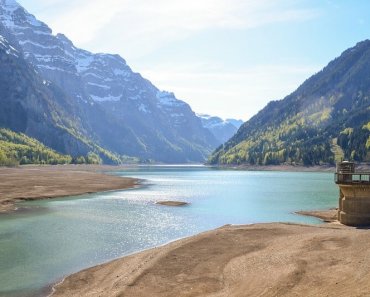A team of researchers has developed a new, low-cost method for continuous, real-time monitoring of groundwater pollution. The development could provide a critical boost for “green” remediation efforts that reduce groundwater contamination without adversely affecting the surrounding environment.
The study, entitled “In Situ Monitoring of Groundwater Contamination Using the Kalman Filter,” is the result of a collaboration between the U.S. Department of Energy’s Lawrence Berkeley National Laboratory (Berkeley Lab), which is run by the University of California, and the Savannah River National Laboratory.
The need for remediation
Groundwater contamination, which is almost always a result of man-made chemicals and contaminants being discharged into the environment, can cause a plethora of problems for the natural environment and for human populations residing near the affected area.
Over 50 percent of drinking water in the U.S. is sourced from groundwater. It is also one of the most important sources of water for irrigation.
Contaminated groundwater — whether the result of fracking, pesticide use, or faulty septic systems — can affect everything from the safety of your drinking water to the quality of the food you eat and to the health of surrounding shellfish populations.
The growth of the environmentalist movement over the past half century has raised public awareness of the effects of groundwater contamination. This increased awareness has resulted in a great push to clean up — or remediate — contaminated groundwater.
“Groundwater remediation has about 60 years of history,” said lead researcher Haruko Wainwright, a research scientist at Berkeley Lab, who is an expert in groundwater contamination and environmental data analytics.
Flaws in current remediation methods
Unfortunately, remediation is both expensive and difficult to do without unintentionally causing adverse effects on the environment. As a result, remediation experts have increasingly turned away from intensive remediation and soil removal to pursue more “green” or passive remediation strategies.
“In the past decade, there is a growing recognition that intensive remediation is not effective and can actually harm the environment, because it uses a lot of water and energy, produces waste and CO2, and potentially creates ecological disturbance and air pollution,” said Wainwright.
“Passive remediation or natural attenuation is now considered more sustainable and has net environmental benefit. Groundwater monitoring is critical to ensuring public safety while these sustainable approaches are implemented.”
As Wainwright indicates, the most effective remediation strategies require accurate long-term monitoring of groundwater pollution. But again, long-term monitoring is both complex and expensive.
“Conventional monitoring is taking water samples every year or every quarter and analyzing them in the lab,” Wainwright said. “If there are anomalies or an extreme event, you could miss the changes that might increase contaminant concentrations or potential health risk.”
This presents a challenge: how can you continuously monitor contaminant levels at a low cost?
Wainwright’s team found a solution.
The new method
“Our methodology allows continuous monitoring in situ [on site] using proxy measurements, so we can track plume movement in real time,” she said in a statement. “Analysis of the autonomous in situ data can be rapidly analyzed remotely using machine learning methods.”
The new method involves using sensors to track water quality variables that have been determined to be reliable indicators of contaminant levels. These water quality variables differ based on the site and the specific groundwater contaminants.
For this study, the researchers analyzed groundwater at the Savannah River Site in South Carolina.

The site is a former nuclear weapons production site; as a result, the researchers tracked groundwater levels of the contaminants tritium and uranium-238.
The levels of these contaminants cannot be directly measured, so they relied on indirect measurements determined to be reliable indicators of tritium and uranium-238. Specifically, they measured the acidity, or pH, levels and specific conductance, which is a measure of electrical conductance.
These measurements were then put into a Kalman filter, an algorithm that can be used to measure changes in a system state over time in cases where the system state cannot be measured directly.
“A Kalman filter is not a physical filter but rather a mathematical algorithm that can integrate mixed time-series data to make estimates,” said Wainwright. “It is commonly used in various fields, such as traffic prediction and remote sensing.”
Here, it allowed the researchers to create an accurate estimate of contaminant concentrations.
They then tested their technique against historical data from the Savannah River Site. They found that their algorithm provided reliable information about plume behavior over the last 20 years.
This suggests that the method may be effective as a long-term monitoring strategy for assessing the plume stability of a contaminant.
It also means that there is less need for regular manual groundwater sampling and lab analysis, which are costly, as well as time- and labor-intensive.
“It can act as an early warning system – we can detect sudden changes in contaminant levels,” Wainwright said in a statement. “These changes may indicate a need for more or less intervention in terms of the remediation strategy, ideally leading to improved as well as more cost-effective cleanup.”
Moreover, the method is also adaptable.
It can be used to track both surface and underground water contaminants and could potentially be modified to track a wide variety of contaminants, including metals, radionuclides and organic compounds, such as arsenic, chromium and fuels.
All it requires is finding reliable in situ measurements. From there, the contaminant levels can be estimated using the same framework.
It is easy to imagine this method being widely utilized on sites across the country, but first, it has to be reviewed and approved by regulatory agencies.
Once it is, it could significantly assist remediation efforts.
“Improved monitoring techniques are essential to protect public health and ecology,” Wainwright said in a statement. “Our technique is a way to monitor such sustainable remediation — effectively and cheaply.”



